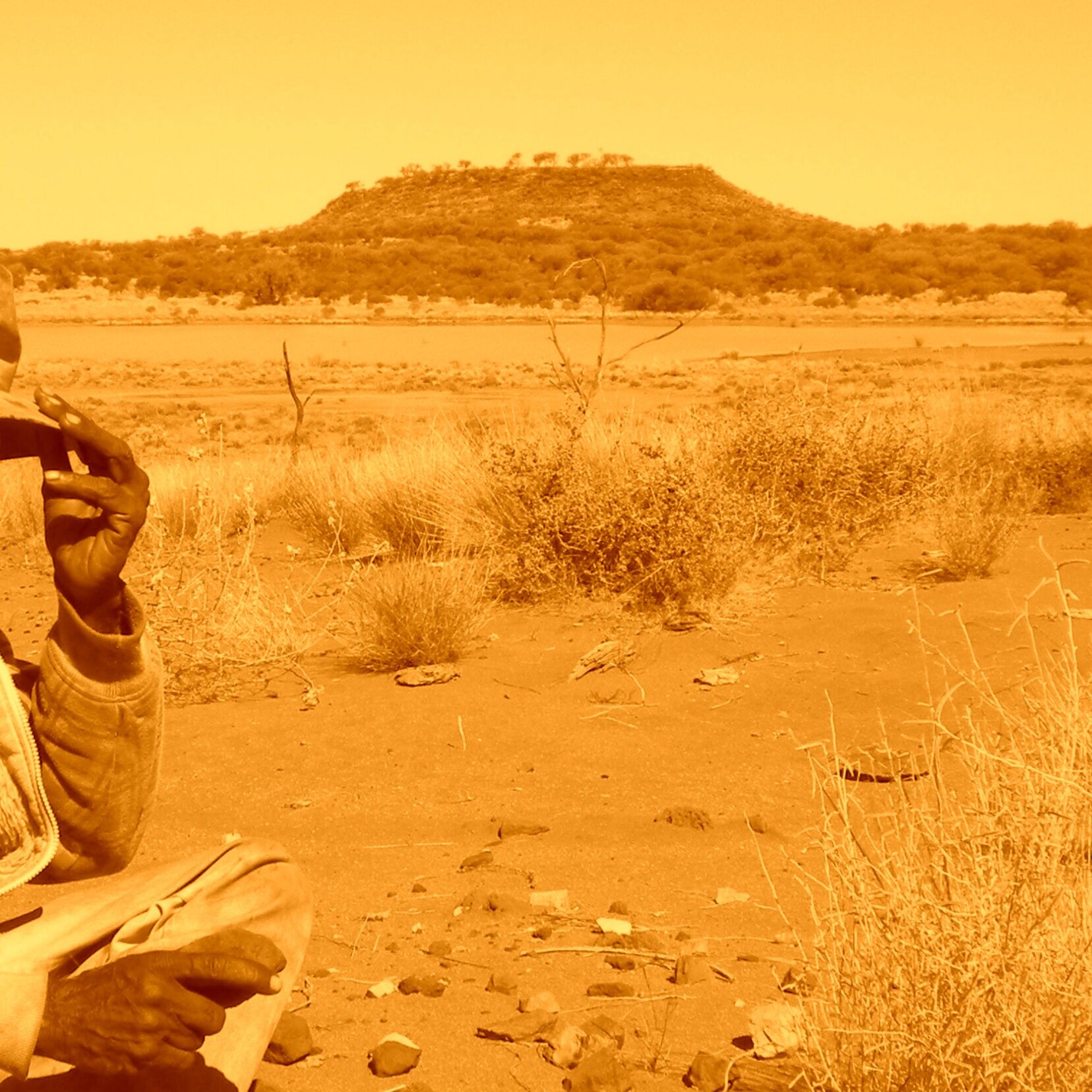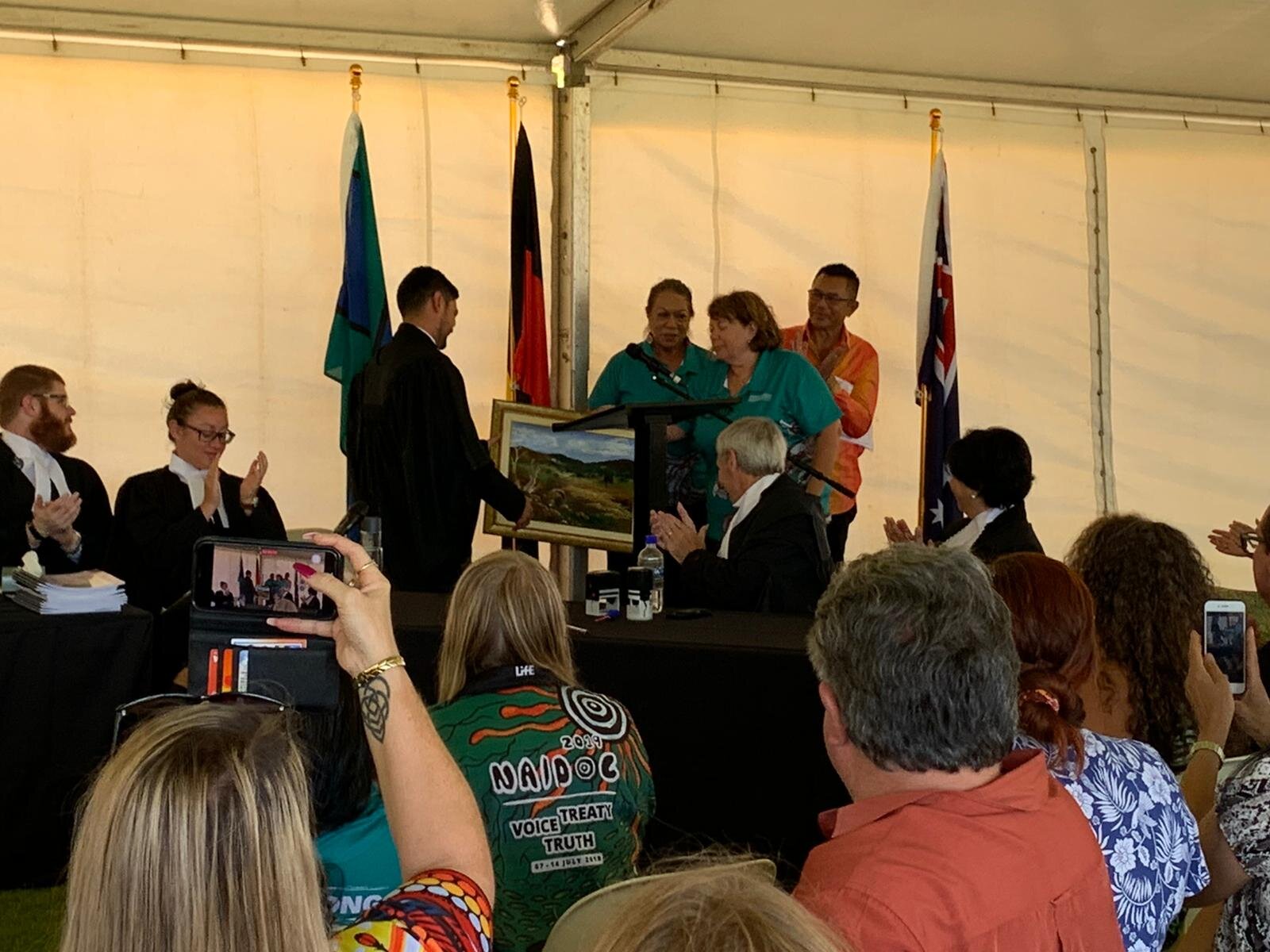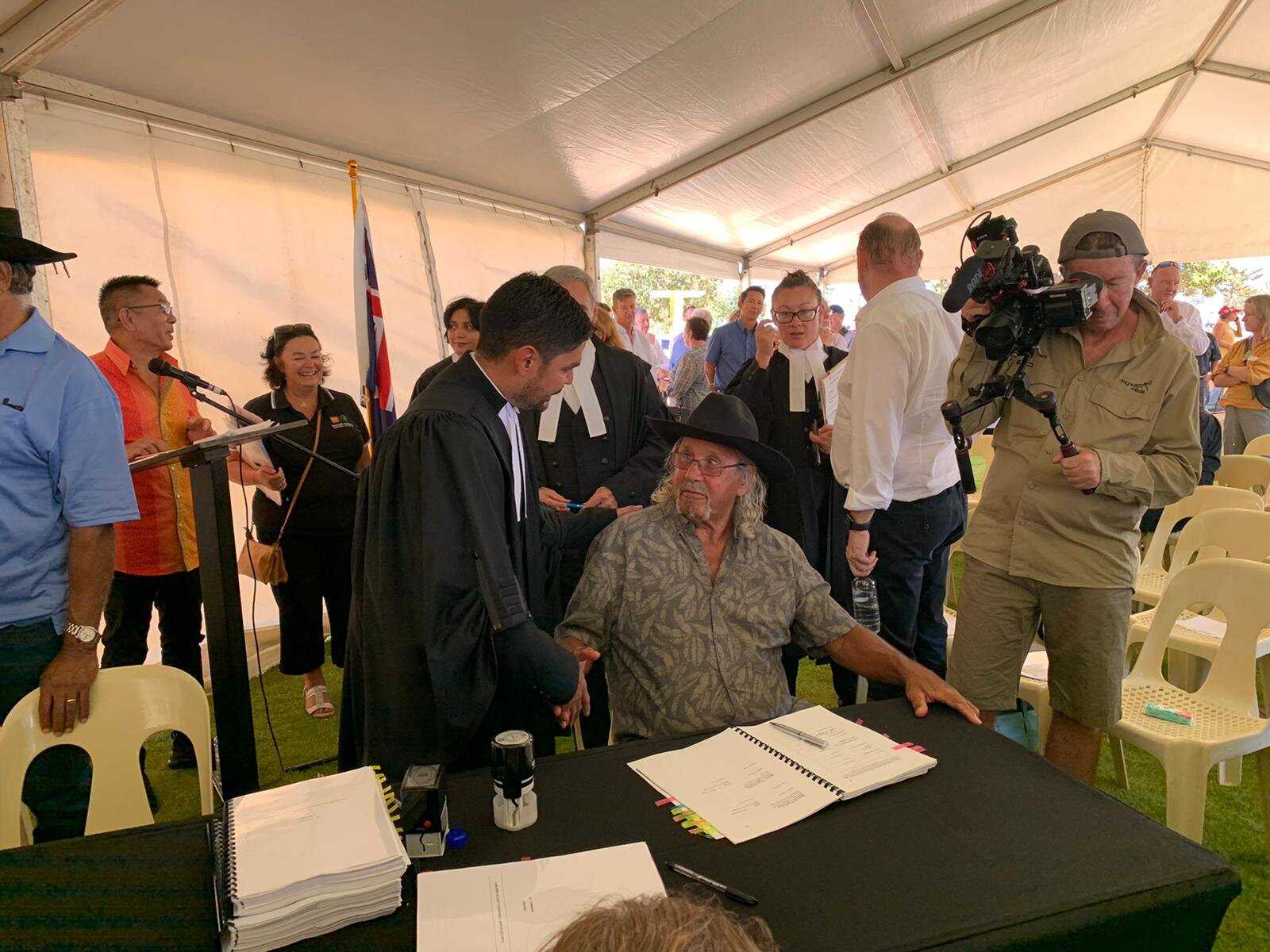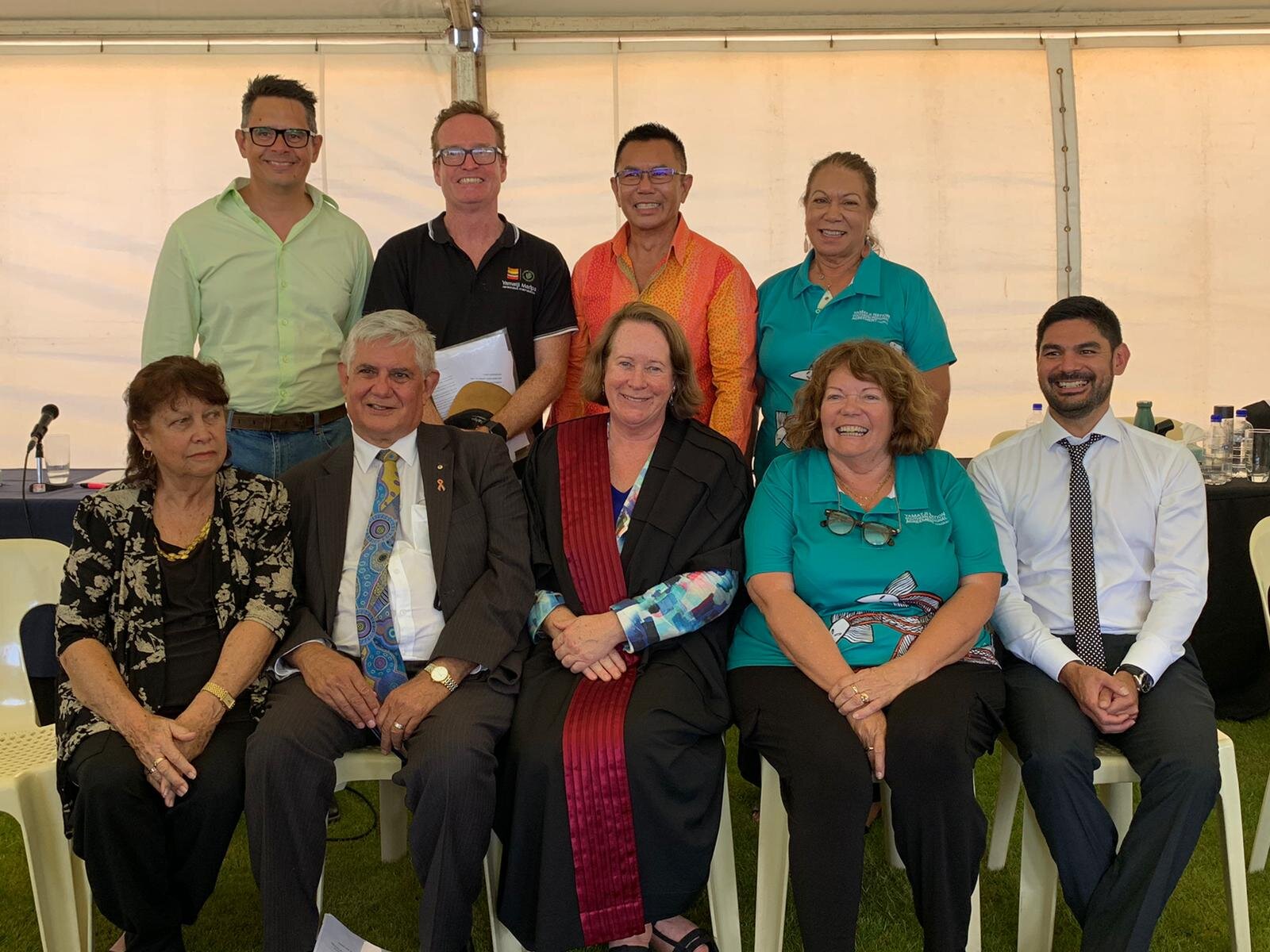This article summarises updates on native title across Australia over the past twelve months, but also provides broader commentary on policy and current affairs relevant to Aboriginal and Torres Strait Islanders and stakeholders working with First Nations.
Native title by the numbers
· 138 claims are unresolved
· 11 current compensation claims (increasing from 3 in the previous year)
· 1,347 registered Indigenous Land Use Agreements since 1992
· 507 native title determinations, with 420 determinations recognising native title, since 1992
Native title reforms
The Native Title Legislation Amendment Bill (the Bill) proposes amendments to both the Native Title Act 1993 (Cth) (Native Title Act) and the Corporations (Aboriginal and Torres Strait Islander Act 2006 (Cth) (CATSI Act).
Broadly, the Bill seeks to strengthen rules and processes in relation to:
1. Authorisation;
2. Applicant Decision Making;
3. Indigenous Land Use Agreements;
4. Historical Extinguishment;
5. Registered Native Title Body Corporate’s right to bring compensation applications;
6. Intervention and Consent Determinations;
7. Other processes; and,
8. RNTBC Obligations
On 19 August 2020, the Senate Legal and Constitutional affairs Committee recommended that the Federal Parliament pass the Native Title Legislation Amendment Bill 2019. Should the Bill pass through the House of Representatives and Senate, it will be the most significant changes to the Native Title Act since the Howard Government’s amendments after the Wik decision in 1998.
Native title corporation reforms
The CATSI Act is also being reviewed. Several issues are being considered, including:
• how native title benefits must be reported
• changing Regulations to include native title benefit decisions as ‘native title decisions’
• allowing trusts under the CATSI Act
• changing membership details and application timeframes
• changing membership cancellation and appeals processes
• broadening grounds for administration
• changing processes relating to show cause notices
• changes to presumptions of insolvency
• reviewing the Registrar’s power to call or cancel a meeting
• changes to corporation rights to cancel or delay a meeting
• allowing different memberships and wholly owned subsidiaries in the CATSI Act
• changes to director remuneration reporting
• changes to board composition and independent directors
• reviewing incorporating traditional legal concepts in corporation rules
• considering arbitration functions for disputes
Native title representative body (NTRB) updates
NTRBs (including service providers) are the organisations recognised under the Native Title Act that carry special functions, including facilitating and assisting native title claims. There have been interesting developments for NTRBs in the past year, including the following:
• In 2019, an NTRB in Western Australia was not funded by the Commonwealth Government. This led to the creation of Native Title Services Goldfields.
• The Commonwealth Government, through the National Indigenous Australians Agency, has changed the funding cycles of NTRBs, and this has impacted the way NTRBs operate.
• In August 2020, it was reported that the National Native Title Council (the peak body for NTBCs) was intending to pool internal NTRB lawyers to limit the use of ‘external’ lawyers.
State based treaties
State Governments around the country continue to prepare for treaty negotiations. In Victoria, the First Peoples’ Assembly of Victoria has been declared to be the Aboriginal Representative Body, with a focus on ‘nation-building’ to give Traditional Owner groups access to funding to prepare for treaty negotiations. In Queensland earlier this year, the Queensland Government accepted, or accepted in principle, recommendations and released a statement of commitment and response to the ‘Path to Treaty’. The next step in Queensland will be the establishment of a Treaty Advancement Committee.
These treaty processes are separate to native title processes.
Increasing relevance of International Standards in risk management
In 2007 the United Nations General Assembly adopted the Declaration on the Rights of Indigenous People (the Declaration). Australia is a signatory. Article 32 of the Declaration provides that:
States shall consult and cooperate in good faith with the indigenous peoples concerned through their own representative institutions in order to obtain their free and informed consent prior to the approval of any project affecting their lands or territories and other resources, particularly in connection with the development, utilization or exploitation of mineral, water or other resources.
The Declaration is also relevant to the Equator Principles. The Equator Principles are a set of international risk management standards for financial institutions. It requires evidence of compliance with the Declaration as a minimum standard as part of the financial institution’s due diligence process. The latest version of the framework is Equator Principle 4, and must have been implemented by Equator Principles Financial Institutions (EPFIs) by 1 October 2020. Stakeholders who work in native title may require project finance should be aware of these international standards. At the time of writing, October 2020, there are currently 111 financial institutions in 37 countries who are signatories.
Relevance of State-based heritage laws and the Juukan Gorge case study
Each State and Territory has its own legislation relating to cultural heritage. This legislation operates in addition to native title law. The most recent and publicly covered example of the interaction between State-based heritage laws and native title is in relation to Juukan Gorge.
The Juukan Gorge caves, located in the Pilbara region of Western Australia, are recognised as being one of Australia’s oldest known Aboriginal heritage sites. The caves, having evidence of human occupation dating over 46,000 years, were destroyed by explosives used by Rio Tinto in May 2020 to extend its Brockman 4 iron ore mine.
Section 17 of the Aboriginal Heritage Act 1972 (WA) provides a person shall not excavate, destroy, damage, conceal or in any way alter any Aboriginal site, unless the consent of the Minster is given pursuant to section 18. Despite destroying an Aboriginal site, Rio Tinto was acting lawfully, having been granted Ministerial consent to conduct the blasting in 2013. The project was also consented to by an Indigenous Land Use Agreement.
In June 2020, the Joint Standing Committee on Northern Australia was directed to commence an inquiry into the destruction of the Juukan Gorge caves. The Committee is due to publish their final report by 9 December 2020 and, as at the date of writing, is currently holding public consultations.
In the interim, the Western Australia government has released the Aboriginal Cultural Heritage Bill 2020 (WA) for public consultation. The Bill, which is the culmination of over two years of consultation with Aboriginal people, industry representatives, heritage professionals and the Western Australian community, proposes significant changes to modernise legislation on the management of Aboriginal heritage in Western Australia. The Bill would repeal the Aboriginal Heritage Act 1972 (WA), in favour of a tiered approach to approvals of Aboriginal heritage land management. The tiered approach would require land users engaging in low, medium or high impact activity to comply with an approved Aboriginal Cultural Heritage Management Plan.
Notably, the Bill will not revoke current section 18 ministerial consents, and these will remain in force. A 12 month grace period prior to the Bill coming into force has been proposed, restricting section 18 ministerial consents made under the current Act, and within this grace period, to only be valid for a period of five years.
Closing the Gap
Closing the Gap progress – or lack thereof – continues to be relevant to traditional owners.
In 2005, Aboriginal and Torres Strait Islander Social Justice Commissioner Tom Calma, in his Social Justice Report, urged Australian governments to commit to achieving equality for Indigenous people in health and life expectancy, within 25 years. Following a number of years of advocacy work by non-government groups, the Council of Australian Governments (COAG; now the National Federation Reform Council) approved the National Indigenous Reform Agreement. The Agreement set out six close the gap targets:
1. Close the life expectancy gap within a generation;
2. Halve the gap in mortality rates for Indigenous children under five;
3. All four year olds, including in remote indigenous communities, have access to early childhood education within;
4. Halve the gap for Indigenous students in reading, writing and numeracy;
5. Halve the gap in Indigenous 20-24 year olds in Year 12 or equivalent attainment; and
6. Halve the gap in employment outcomes between Indigenous and non-Indigenous Australians.
A seventh target was adopted in May 2014 to close the gap between Indigenous and non‑Indigenous school attendance.
The 2020 Closing the Gap report found only two of the seven targets were being met. The unfortunate reality is these failings follow years of failure to meet the 2008 targets. Prime Minister Scott Morrison described the Closing the Gap report as proving a “top-down, government-knows-best” approach has failed (see Commonwealth, Parliamentary Debates, House of Representatives, 12 February 2020 969 (Prime Minister Mr Scott Morrison)).
To address these failings, the National Agreement on Closing the Gap was entered into between the Coalition of Aboriginal and Torres Strait Islander Peak Organisations and all Australian governments. The Agreement is founded on a new approach where “policy making that impacts on the lives of Aboriginal and Torres Strait Islander people is done in full and genuine partnership”.
In the course of developing the Agreement, the Coalition, in partnership with governments, held almost 60 face-to-face meetings across Australia, with more than 2,300 individuals as well as nearly 1,700 individuals responding to an online survey.
The Agreement is structured around four new Priority Reforms to transform the way governments work with and for Aboriginal Torres Strait Islander peoples. These Policy Reforms are coupled with sixteen new national socio-economic and measurable targets. These targets focus on areas including education, employment, health and well-being, justice, safety, housing, land and waters, and the preservation of Aboriginal and Torres Strait Islander languages.
Under the Agreement, the State, Territory and Federal Governments are required to develop an implementation plan in collaboration with Aboriginal and Torres Strait Islanders within twelve months. The implementation plans are required to show how policies and programs align with the Agreement, the actions which will be taken to achieve the Policy Reforms and include information on funding and timeframes for actions.
To ensure the past failings are not repeated, the Agreement has included accountability measures. The Productivity Commission will publish data and supporting materials on progress being made towards reaching the targets. Every three years, the Productivity Commission is also required to conduct a comprehensive review of the progress being made. The Productivity Commission’s reviews will be complimented with reviews led by Independent Aboriginal and Torres Strait Islanders to be conducted within twelve months of the Commissions review. This review will highlight areas of achievement and areas where greater collective effort is needed.
ORIC’s role in placing RNTBCs in special administration
RNTBCs (registered native title body corporates), or PBCs, are the native title organisations that hold or manage native title rights and interests.
Unique to the CATSI Act, the Office of the Registrar of Indigenous Corporations (ORIC) is allowed appoint a special administrator for a period of time. Special administration is a form of external administration but is different to voluntary administration provided by the Corporations Act 2001 (Cth).
The purpose of special administration is to enable ORIC to provide early proactive regulatory assistance for when a corporation experiences financial or governance difficulties. The appointed special administrator will take control of the corporation and is responsible for, and has extensive control over, the conduct of the affairs of the corporation.
Special administration can be an effective tool in restoring the ability of a corporation to act in the best interests of their members. Below are two case studies of ORIC’s role in special administration in 2020.
Case study one: Ngadju Native Title Aboriginal Corporation RNTBC
In November 2019, ORIC placed Ngadju Native Title Aboriginal Corporation RNTBC under special administration. The corporation holds and manages the native title rights and interests for two native title claims around Norseman in Western Australia, on behalf of the Ngadju people – an area larger than the United Kingdom.
The corporation was placed under special administration due to the directors being engaged in long term unresolved disputes. The disputes centred on two groups on the board asserting the other did not hold the board’s full powers. Resultingly, two board members believed they were lawfully appointed to the position of CEO. Lawyers for each faction had asserted their respective firm was the corporations legal representative.
In a statement by ORIC Registrar, Selwyn Button, the governance and decision making of the corporation was “not in the best interests of members and the Ngadju traditional owners”, and ‘the dysfunction was affecting the conduct of the corporation’s affairs”.
In July 2020, ORIC ended the special administration of the corporation and the corporation was returned to member control. The special administration strengthened the internal governance and operational framework. Key changes included:
o the addition of two independent specialist directors on the board;
o limiting the member directorships to six, with no more than one from any one family group;
o revision of the rule book; and
o strengthening the staff structure to decrease reliance on external advice, and in turn, reduce costs.
The corporation will be monitored for twelve months by ORIC.
Case study two: Adnyamathanha Traditional Lands Association (Aboriginal Corporation) RNTBC
In March 2020, ORIC placed the Adnyamathanha Traditional Lands Association (Aboriginal Corporation) RNTBC (ATLA) under special administration. ATLA holds the native title land rights and interest in 41,000 square kilometres of land in and around the Flinders Ranges, South Australia, on behalf of the Adnyamathanha traditional owners.
In an examination by ORIC in November 2019, ATLA, who has various business operations in the area, was found to have a range of governance issues. These issues extended to a lack of records of meetings, membership, spending and directorship. These difficulties were described as chronic and severe.
In July 2020, ORIC extended the appointment of the special administrators. Despite making significant progress, at the time, ATLA was not yet ready to be handed back to the members. ORIC highlighted the need for a substantial undertaking in an overhaul to the corporation to ensure it best serves the Adnyamathanha people.
At the time of writing, the corporation was still under special administration.
Yamatji Nation Southern Regional Settlement
Native title settlements continue to innovate around the country. The Yamatji Nation settlement is a good example of innovation in native title settlements.
The Yamatji Nation native title claim, covering approximately 48,000 square kilometres in Western Australia, has been a long and challenging process. The claim first commenced in 1996 with several overlapping native title claims by various claim groups. Mediation and negotiation amongst the claim groups, the State and other respondents culminated in July 2019 with the filing of a new, overarching claim for native title determination.
In February 2016, a judicial registrar of the Federal Court of Australia mediated to resolve the outstanding overlapping claims. This outcome meant negotiations with the State Government could commence. In November 2017, the Federal Court set a deadline for the claim group and the State to negotiate and reach an agreement by December 2019. The remaining four claim groups agreed to lodge a single claim known as the Yamataji Nation Claim.
In February 2020, the Federal Court of Australia determined native title for the Yamatji Nation Claim. The determination was accompanied by an Indigenous Land Use Agreement (ILUA), with over $450 million in benefits, comprising of monetary components, transfer of commercial land to the Yamatji Nation, joint ventures, tourism opportunities and access to housing.
The Yamatji Nation ILUA was conclusively registered on 23 October 2020.
Five recent noteworthy native title decisions
Northern Land Council v Quall [2020] HCA 33 (Quall)
Quall was an appeal to the High Court of Australia, which overturned the 2019 decision of the Full Court of the Federal Court.
Facts:
· In 2016, Northern Land Council (NLC) and Northern Territory agreed upon an ILUA concerning the Cox Peninsula near Darwin (Kenbi ILUA).
· In March 2017, NLC’s CEO signed certificate to certify ILUA for the purposes of s 24CG(3) of the NTA.
· Certification stated that opinions on factual matters relevant to ss 203 BE(5)(a)-(b) and 203BE(6)(b) were given by NLC. These provisions require the representative body to form and provide an opinion that all reasonable efforts made to ensure persons who hold (or may hold) native title have been identified, and that such persons have authorised the agreement.
· Certification stated that NLC certified the ILUA, whereas the document was executed and the certification made by CEO in his capacity as delegate of the NLC, not by the NLC itself. Delegation authorising CEO to make certification was conferred by resolution of NLC on 1 October 1996 and recorded in an instrument of delegation dated 10 March 2000.
· NTA confers no explicit power of delegation on representative bodies. Existence of power to delegate certification function turns on the question of whether s 203BK (which confers power to do “all things necessary and convenient”) properly construed as containing implicit power of delegation.
Decisions
Appeal to the Full Court of the Federal Court – [2019] FCAFC 77:
· The applicants challenged the certification of the ILUA contending that:
1. NLC’s certification function under s 203BE(1)(b) of the NTA was not delegable;
2. The 1 October 1996 resolution and 10 March 2000 instrument of delegation did not effect valid delegation; and
3. Certificate was not valid for purposes of s 24CG(3)(a) of the NTA and Kenbi ILUA therefore not eligible for registration.
· The Full Court decided that:
o Certification function in s 203 BE(1)(b) cannot be delegated. Proper discharge of certification functions under s 203BE(1)(b) requires NLC itself to hold and state requisite opinion.
o Rejected primary Judge’s finding that s 203BK(1) confers power to delegate.
Appeal to the High Court of Australia:
Although the Justices of the High Court were unanimous in overturning the Full Court’s decision, a 4-2 division arose founded on the reasoning of their Honours.
The Majority
· NTA s 203B(3) prevents, with few exceptions, the RNTB form entering into agreements with another person, under which, the other person would perform the function of the RNTB.
· However, this was not intended to be a reference to those within the representative body or other persons who have authority under the constraining statute.
· NTA s 203BK, an exception of s 203B(3) did not itself grant power to a representative body to delegate; rather, delegation had to be found within the body’s constraining statute.
· Having found the NTA does not prohibit delegation, their Honours found the ‘functions’, referred to in s 27(1) of the ALRA, was not restrained to the specific powers found in s 28 of the ALRA, but rather includes functions conferred on the NLC from or under another act, including the NTA.
The majority concluded the certification function of the NLC, having been delegated onto the CEO, was validly permitted and executed.
The Minority
The minority agreed with the majority that the NLC CEO could perform certification functions, but for different reasons.
· The minority agreed the NTA does not allow delegation of the certification function.
· Although, this did not prevent the NLC from authorising agents to perform authorisation on its behalf and the NLC had authorised the CEO to perform its certification function.
McGlade v South West Aboriginal Land & Sea Aboriginal Corp (No 2) (2019) 374 ALR 329; [2019] FCAFC 238
Facts:
· The Noongar people are the traditional owners of approximately 200,000 square kilometres in the South West Region of Western Australia. Six ILUAs were made between the Noongar people and the State of Western Australia and were registered by a Registrar to the Native Title Tribunal. All six ILUAs later faced judicial review in the Federal Court. The Federal Court referred these applications directly to the Full Court.
· The grounds for judicial review was that the Registrar had erred in finding the ILUAs had been properly authorised because:
o The Noongar people were misled into believing the authorisation process must have taken place at an in person meeting on Country;
o A large number of incarcerated Noongar people were denied the opportunity to participate;
o Most Noongar people were not afforded reasonable opportunity to participate in the authorisation process; and
o Not all Noongar people were invited to each authorisation meeting.
Decision:
· The Full Court held the Registrar had not erred in their registration.
Reasons for decision:
· The Full Court accepted attendees at a meeting are permitted to agree and adopt a decision making process implementing postal and proxy voting. However, at none of the six authorisation meetings, was this agreed upon. Further, there was nothing inherently incorrect in believing an authorisation processes must take place in person and on Country.
· Turning to incarcerated Noongar people, the South West Aboriginal Land and Sea Council had taken measures to ensure the incarcerated members were afforded a reasonable opportunity to participate in the authorisation process. These steps included information sessions held in prisons. The Court emphasised the importance of ‘proper and genuine consideration’ to involve incarcerated native title holders.
· The Court rejected the argument that around 15,000 Noongar people, many of whom live in Perth, would have found it difficult to attend an authorisation meeting. The Court found it is ‘entirely appropriate’ to hold authorisation meetings on Country where adequate transport is provided.
· The Court accepted that it was appropriate for not all Noongar people to be invited to every meeting. The reason being that despite the single Noongar people claim, not all Noongar people were entitled to the whole claim area.
Western Australia v Manado (2020) 376 ALR 427; [2020] HCA 9
Facts:
· The Bindunbur and Jabirr Jabirr/Ngumbarl native title determinations were made covering large areas of land and waters on the Dampier Peninsula in the Kimberly Region of Western Australia.
· The State of Western Australia had enacted the Titles (Validation) and Native Title (Effect of Past Acts) 1995 (WA) which confirmed public access to public areas, mirroring the wording of s 212(2) of the NTA.
· The appeal to the High Court of Australia was against the decision of the Federal Court of Australia, which had overturned the decision of the Federal Court.
Decision:
· The High Court of Australia overturned the decision of the Full Court of the Federal Court.
· The Court unanimously confirmed that access to and enjoyment of public areas, as authorised by s 212(2) of the NTA, must be recorded where those interests fall within a native title determination
Reasons for decision:
The majority
· The majority held access and enjoyment was within the definition of an ‘interest’ found in s 253 of the NTA. In turn, the Court concluded the interest must be included in a native title determination as an ‘other interest’ within s 225(c).
· Their Honours reasoned the NTA gives authority to confirm existing public rights of access and enjoyment and that even if the right had not been afforded by law, or if the right was not in use by the public, the right still existed.
The minority
· Nettle J concluded public access and enjoyment equates to a ‘privilege’ and not a right.
Edelman J found the public access and enjoyment to be a ‘right’, relying on the plain and ordinary meaning of the word.
Drury obh of Nanda People v Western Australia [2020] FCAFC 69
Facts:
· In November 2019, a consent determination allowing both the Malgana People and the Nanda People to hold non-exclusive native title rights over an ‘overlap’ area of two claims, approximately 800 kilometres north of Perth.
· The Federal Court referred the matter to the Full Court of the Federal Court of Australia to determine:
1. If the court has the power to decide more than one PBC can perform the associated functions; and
2. If this is permitted, does the court have discretion in determining if only one PBC should exist for an area where each claim group has nominated a PBC.
Decision:
· The majority concluded the court holds power to grant more than one PBC the functions of the NTA and regulatory functions, but only where there has been an ‘overall determination’ to the existence of ‘separate and distinct native titles’.
· The second question was answered in the negative.
Reasons for Decision:
· Exploring ‘separate and distinct native title’:
o The common connection by a particular group of people to a particular land or waters can be possessed by the whole society, or by individual groups within the society which does not extend to broader societal communal ownership.
o Their Honour’s drew attention to the fact that communal native title need not be held by the entire single, although this will usually be the case.
· In discussing ‘overall determination’:
o The overall determination is a determination as to if native title exists in relation to a particular land or waters.
o Further, a single determination of native title can give rise to multiple overall determinations, as a native title determination requires a determination of all areas contained within the claim area.
o Once a determination of native title is made, further determinations can be made, providing more context on the determination.
· The power of the court to make a determination of which PBC holds which native title rights operates only when a native title determination is made. This operates the same if a claim is overlapping or not.
· Where there has been a determination, the process for nominating a PBC must be followed, and two PBCs over the same area is a ‘necessary consequence’.
· The language of the NTA provides mandatory appointment of a PBC or a determination if the land is to be held in trust. Therefore, if a nomination for who will hold native title is made, the nomination is to be given effect without the discretion of the court.
Fortescue Metals Group v Warrie obh of Yindjibarndi People [2019] FCAFC 177
An appeal by Fortescue Metals Group (FMG) of the judgement of the Federal Court of Australia.
Facts:
· In 2017, the Yindjibarndi People were found to hold exclusive native title to land to areas in and around the Pibara region of Western Australia, including FMG’s Solomon Hub iron ore mines. The Court had rejected arguments from the State and FMG to find only non-exclusive native title.
· FMG appealed the decision to the Full Court of the Federal Court in December 2017.
· FMG argued:
1. The existence of an abuse of process, due to inconsistent earlier determinations for separate areas which recognised the Yindjibarndi People as only holding non-exclusive native title;
2. The Yindjibarndi People’s native title rights and interests should not include a right to exclude anyone from accessing the determination area for any reason; and
3. Certain parts of the claim should not have been ‘occupied’.
Decision:
· The Full Court dismissed FMG’s appeal.
Reasons for Decision:
The Full Court reasoned the following:
1. There was no oppression to FMG in the Yindjibarndi People asserting their exclusive rights, not did the Yindjibarndi People’s actions bring the administration of justice into disrepute.
2. No error was made by the primary judge in finding exclusive possession could arise from spiritual necessity. This finding had been correctly applied from the decisions of Griffiths v Northern Territory [2007] FCAFC 178 and Banjima People v Western Australia [2015] FCAFC 84.
3. A ‘concrete real world sense’ is not required to show ‘occupation’ under s 47B of the NTA. Rather, occupation is a question of fact and can be derived from spiritual, cultural and social contexts.
FMG sought special leave of the High Court of Australia which was refused in May 2020.
For more information contact Michael Pagsanjan (michael@mpslaw.com.au).












